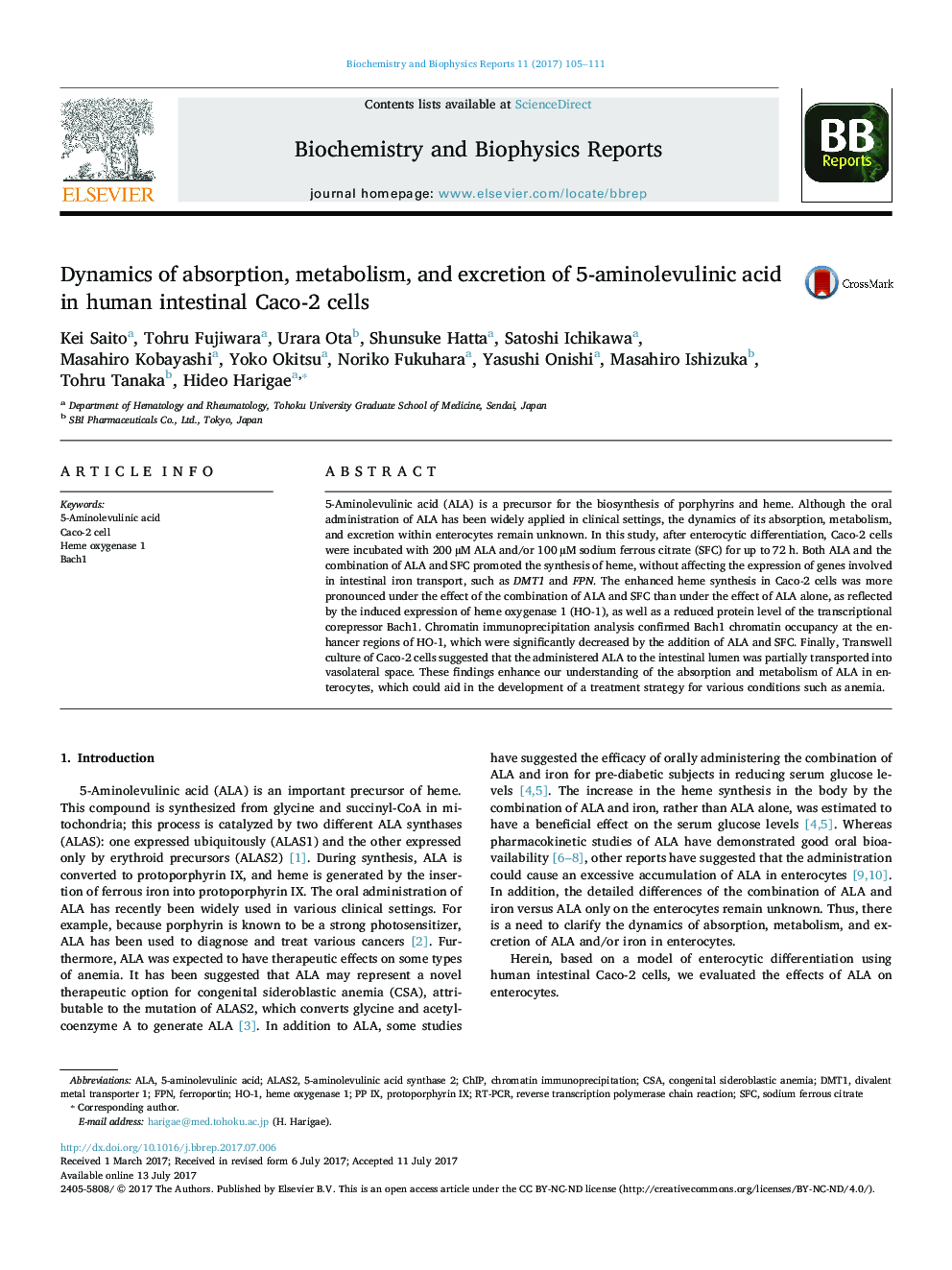| Article ID | Journal | Published Year | Pages | File Type |
|---|---|---|---|---|
| 5507053 | Biochemistry and Biophysics Reports | 2017 | 7 Pages |
â¢Combination of ALA and SFC promotes heme synthesis than ALA alone in Caco-2 cells.â¢Heme induces HO-1 by inhibiting transcriptional corepressor Bach1 in Caco-2 cells.â¢Addition of ALA to intestinal lumen was partially transported to vasolateral space.â¢Our data enhance the understanding of the dynamics of ALA in enterocytes.
5-Aminolevulinic acid (ALA) is a precursor for the biosynthesis of porphyrins and heme. Although the oral administration of ALA has been widely applied in clinical settings, the dynamics of its absorption, metabolism, and excretion within enterocytes remain unknown. In this study, after enterocytic differentiation, Caco-2 cells were incubated with 200 µM ALA and/or 100 µM sodium ferrous citrate (SFC) for up to 72 h. Both ALA and the combination of ALA and SFC promoted the synthesis of heme, without affecting the expression of genes involved in intestinal iron transport, such as DMT1 and FPN. The enhanced heme synthesis in Caco-2 cells was more pronounced under the effect of the combination of ALA and SFC than under the effect of ALA alone, as reflected by the induced expression of heme oxygenase 1 (HO-1), as well as a reduced protein level of the transcriptional corepressor Bach1. Chromatin immunoprecipitation analysis confirmed Bach1 chromatin occupancy at the enhancer regions of HO-1, which were significantly decreased by the addition of ALA and SFC. Finally, Transwell culture of Caco-2 cells suggested that the administered ALA to the intestinal lumen was partially transported into vasolateral space. These findings enhance our understanding of the absorption and metabolism of ALA in enterocytes, which could aid in the development of a treatment strategy for various conditions such as anemia.
